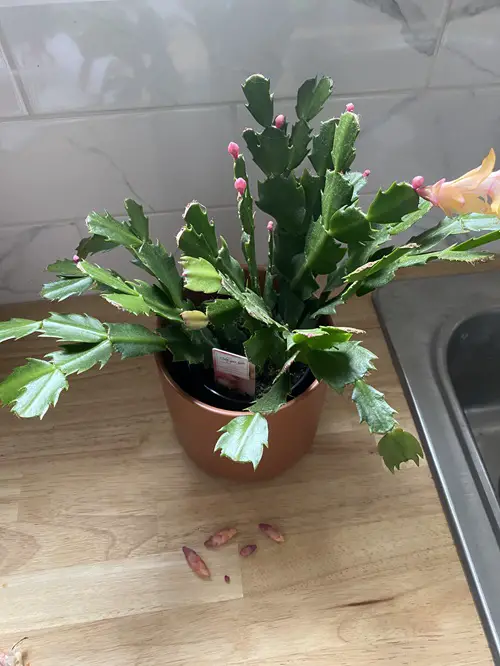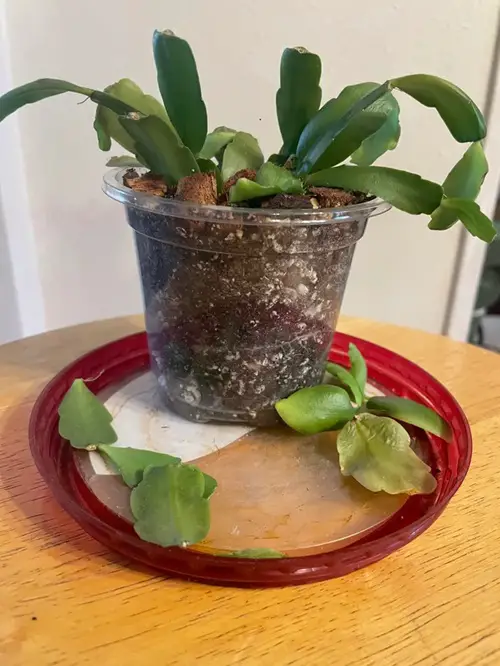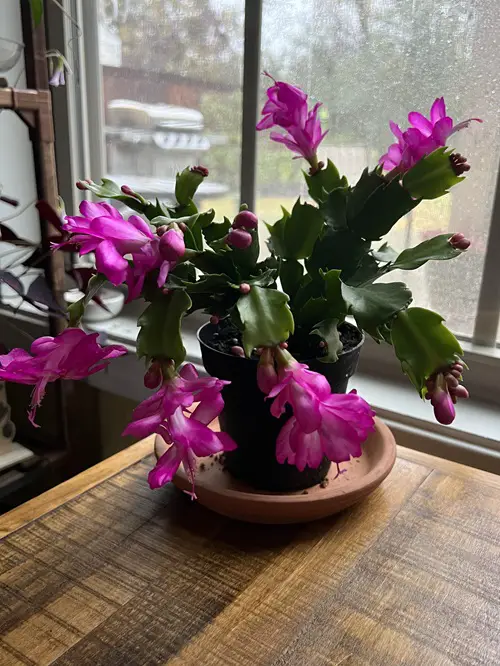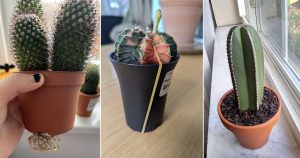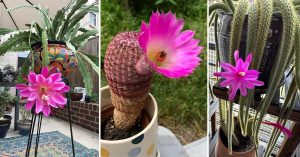Are your Christmas cactus leaves and flowers falling off? Find out the causes and solutions to keep your plant blooming through the holidays.
We all get good and bad in our lunch boxes! If your Schlumbergera blooms nicely, that’s great but if you notice that your Christmas cactus leaves and flowers falling off, then it’s time to give proper care to it! Don’t worry! We are here to help you out with this!
Causes and Solutions for Christmas cactus Leaves Fall Off
1. Watering Issues
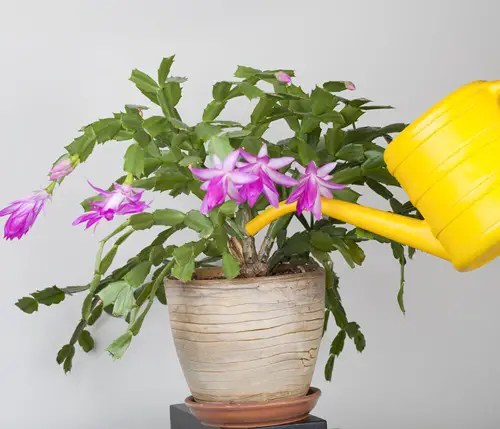
First off, watering is critical for Christmas cactus care, and it’s easy to get it wrong. Both underwatering and overwatering can lead to problems. Overwatering, for instance, can cause root rot. If the soil stays too wet, the roots can’t function properly, and this can lead to the leaves and flowers dropping off. On the other hand, if your cactus isn’t getting enough water, it might start to look droopy and eventually shed its leaves and flowers as well.
So, how do you get it right? A simple rule is to water your Christmas cactus about once a week. Before you water, check if the soil is dry by sticking your finger an inch deep into it. If it feels dry, it’s time to water. If not, wait a few days and check again. A moisture meter can also help you avoid overwatering. During fall and winter, when the plant is less active, you should water it even less frequently.
2. Soil Struggles
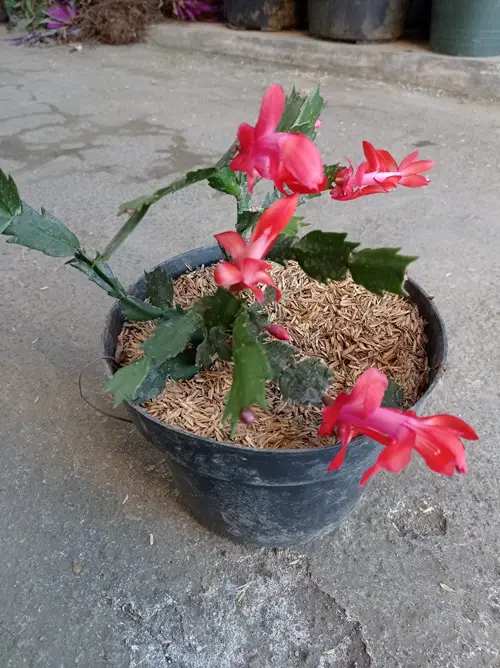
The right soil is crucial for the health of your Christmas cactus. If the soil is too dense or compacted, it won’t drain properly, which can lead to root rot and cause the leaves to drop. Similarly, soil that doesn’t have enough nutrients can make the leaves droop and fall off, especially when the plant is flowering because all the nutrients go to the flowers.
To keep your cactus happy, use a well-draining, porous soil mix. A good mix could be one part potting soil, two parts peat moss, and one part perlite. Fertilizing is also important. You can use a succulent-specific liquid fertilizer, diluted according to the instructions, and apply it once a month. But remember, in the summer when it’s really hot and the cactus goes dormant, you don’t need to fertilize.
3. Temperature Troubles
Christmas cactus is quite sensitive to extreme temperatures. If it’s exposed to very high or very low temperatures, it can get stressed and start dropping leaves and flowers. For instance, if your cactus is near a fireplace or a heater, the high heat can dry it out and cause leaf drop. Conversely, if it’s exposed to cold drafts or low temperatures for too long, it might also start losing leaves.
The best way to manage this is by keeping the temperature consistent. In spring and summer, aim for a temperature between 70℉ and 80℉. In the fall, a slightly cooler range of 60℉ to 70℉ is good, and in the winter, around 55℉ is ideal. If your plant is outdoors and the weather is extreme, bring it inside or move it to a greenhouse to protect it.
Precaution: Please avoid moving your Christmas cactus around too much, especially when it’s budding. Changes in the environment is actually a big factor in dropping leaves and flowers!
4. Light Issues
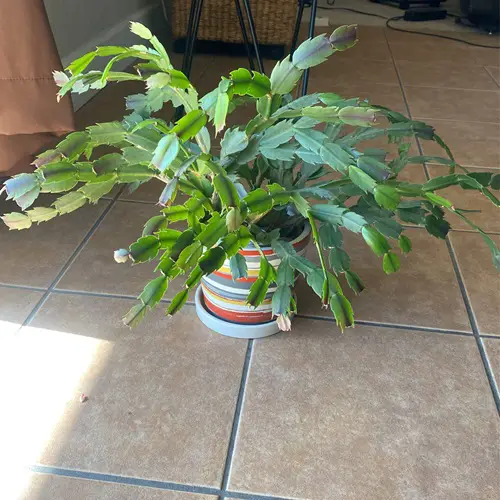
Christmas cactus properly grow in bright, indirect light. Too much direct sunlight, mainly in the summer, can cause the leaves to get scorched and fall off. On the flip side, if it doesn’t get enough light, it might not produce strong leaves, and they could start to drop.
To find the right balance, place your cactus in a spot where it gets plenty of bright but indirect light. In the summer, you might want to move it to a shaded area outside, like under a porch or patio. In the winter, keep it near a window with filtered light.
5. Pot Problems
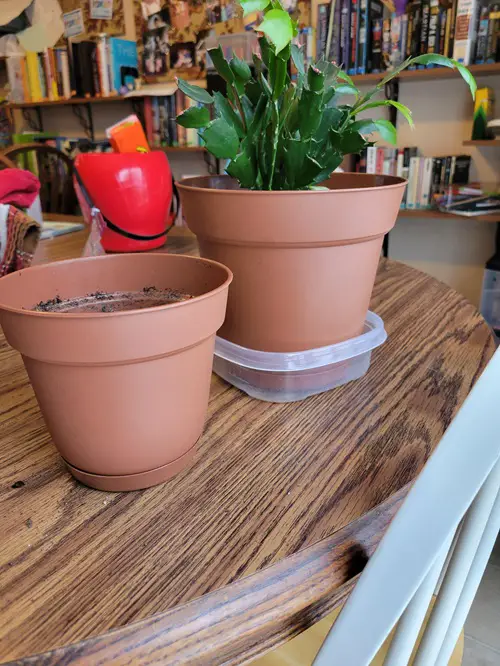
Never forget about the pot size! Christmas cactus grows at a moderate rate and can outgrow its pot in a few years. When it becomes root-bound, it can’t get enough nutrients, and it starts dropping leaves and flowers. If your cactus has been in the same pot for a long time, it might be time to repot it.
Repotting your Christmas cactus can give it a new lease on life. You can choose a slightly larger pot and fill it with fresh, nutrient-rich soil. Gently remove the plant from its old pot, shake off as much old soil as you can, and place it in the new pot with fresh soil. This will give your plant more room to grow and access to new nutrients.
6. Humidity Hassles
Christmas cacti love a bit of humidity, which can be a problem in dry indoor environments, especially during winter. Dry air can stress the plant, causing it to drop leaves and flowers.
To solve this, you can create a simple humidity tray. Place a shallow tray filled with water and pebbles under your cactus pot. Make sure the pot sits on the pebbles and not directly in the water. This setup increases the humidity around the plant. You could also use a humidifier to keep the air moist, mainly in the winter months.
7. Nutrient Needs
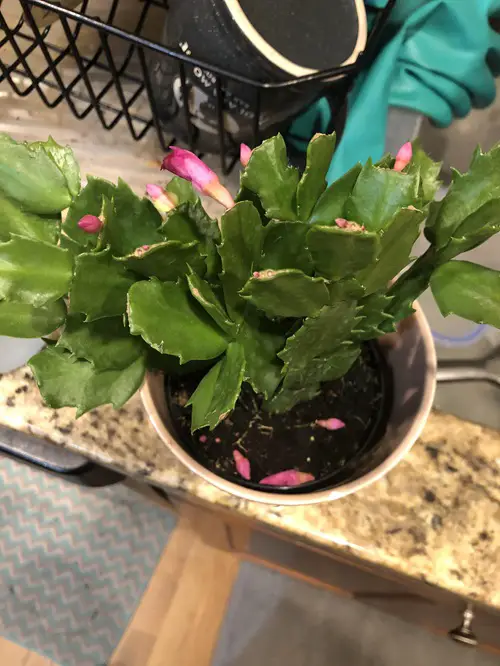
Christmas cacti are epiphytes in their natural habitat and they grow on trees and absorb nutrients from the air and rain but sometimes, lack of essential nutrients can also cause your Christmas cactus to drop leaves and flowers. If your plant seems to be struggling, it might be time to feed it a little extra.
You can use a balanced, water-soluble fertilizer every two to four weeks during the growing season. And, make sure to dilute it to half the recommended strength to avoid over-fertilizing, which can also harm the plant.
Tip: Coffee grounds can be a great natural fertilizer for Christmas cacti. They add nitrogen to the soil, promoting healthy growth and flowering.
Conclusion
Dealing with a Christmas cactus that’s dropping leaves and flowers can be frustrating, but by understanding these common issues and how to address them, you can keep your plant healthy and blooming. Regular watering, the right soil, stable temperatures, proper lighting, and timely repotting are key to a happy Christmas cactus. With a little care and attention, your plant will thrive and continue to brighten your home through the holiday season.
Have you faced any challenges with your Christmas cactus? What solutions worked for you? Share your stories and tips in the comments below—we’d love to hear from you!

